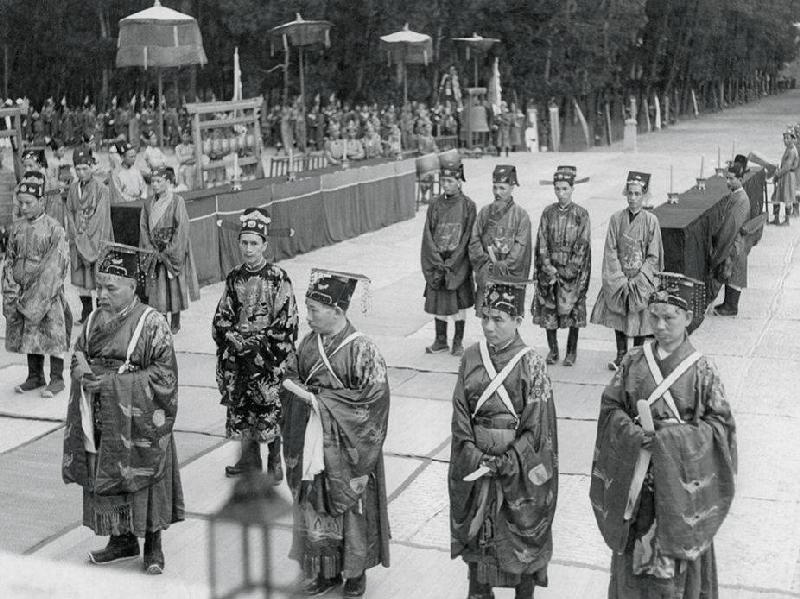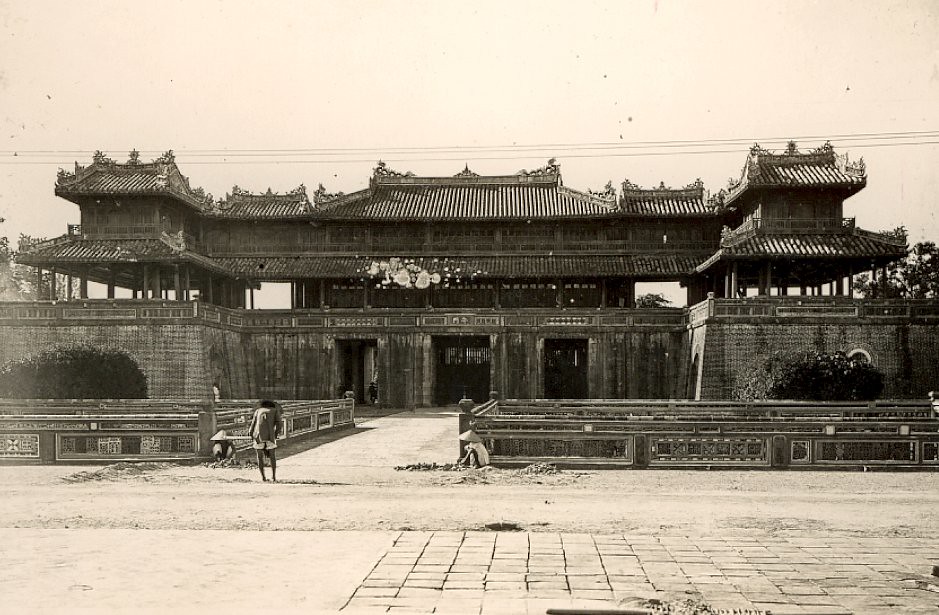Ly Dynasty Mandarian Costumes: The Beauty Of Costumes And Cultural Interference
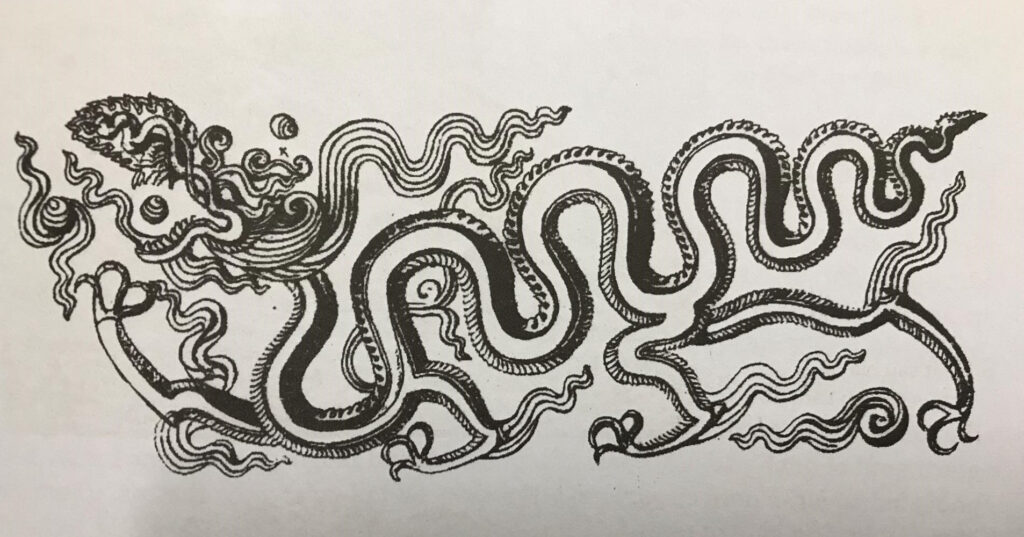
Following 24 years without major reforms to court ritual and official robes, Emperor Ly Thai Tong first formally re-established the system of official attire in 1030. A significant cultural shift occurred in 1059 when Emperor Ly Thanh Tong formally adopted the Court Dress system of the Song Dynasty from China. This was notably marked by the decree requiring all civil and military mandarins to wear the Phốc Đầu hat and boots when attending court. From this point forward, the mandarins of the Ly court utilized three main categories of attire: Ceremonial Attire, Formal Court Attire, and Daily Court Attire.
1. Ceremonial Attire
Ceremonial Attire was the most distinguished form of dress, reserved for grand state occasions. For princes and high-ranking mandarins, the principal Ceremonial Attire was the Cổn Miện set, the same type used by the emperor. Rank and title were carefully differentiated through two primary features: The number of Lưu (pearl strings) on the Mũ Miện (Miện hat) and the number of Chương (ornamental symbols) embroidered onto the Cổn robe.
Additionally, the mandarins of the Ly Dynasty had another form of Ceremonial Attire known as the Củng Thần. However, historians are currently unable to definitively confirm whether the regulations for the Cổn Miện and Củng Thần sets during the Ly and subsequent Tran dynasties were identical.
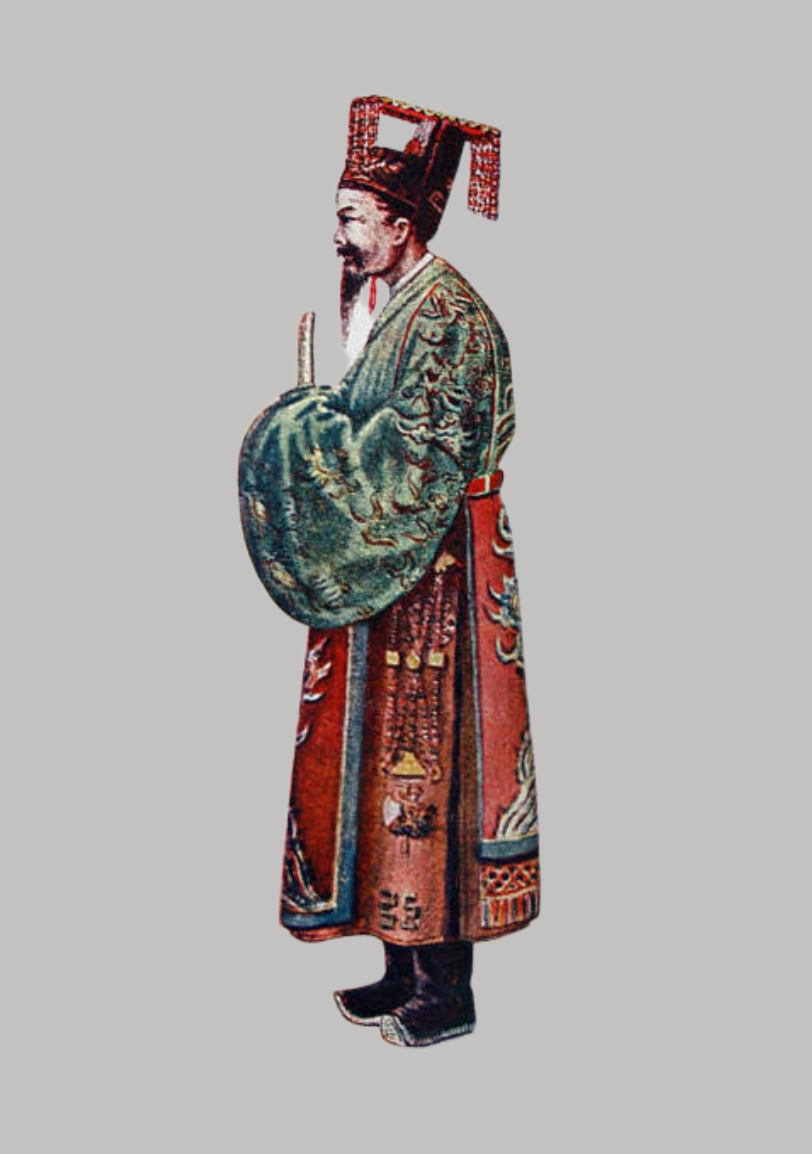
Cổn Miện attire for princes and high nobles of the Nguyen Dynasty
2. Formal Court Attire
The Formal Court Attire of the Ly mandarins was directly inherited from the Song Dynasty system. The Song court’s Formal Court Attire included three primary hat styles: Tiến Hiền, Điêu Thiền, and Giải Trãi. In essence, all three hats were variations of the Tiến Hiền hat, differentiated only by the addition of specific appendages—such as the tail of the Điêu Thử (a type of sable) or the horn of the Giải Trãi (a mythical beast)—which gave them their distinct names.
The Tiến Hiền hat was also frequently referred to as the Lương Quan hat. Its various ranks were distinguished by the number of golden ridges running vertically along the hat’s body. The Thất Lương Quan (seven-ridged hat) was reserved for the highest officials, including those in the first-tier rank (princes, high ministers, and the Three Dukes – tam công) and the second-tier rank (high state secretaries and royal tutors).

Artifact of the Lương Quan hat on display at the Temple of Confucius

Portrait of Pham Trong Yem wearing the Điêu Thiền hat
Following the Song court regulations, all three Formal Court hats (Tiến Hiền, Điêu Thiền, Giải Trãi) were paired with the same set of robes: red coat, red skirt. This attire consisted of a red silk gown and skirt, worn over a white silk inner-robe, and completed with accessories such as a belt, boots, and a ceremonial tablet.

Ming Dynasty official wearing the Lương Quan Formal Court Attire
3. Daily Court Attire
Starting in 1059, the Daily Court Attire for Ly mandarins also followed the Song Dynasty system. The standard hat for daily court sessions was the Phốc Đầu (Phốc Đầu hat). Characterized by its square shape and two long, straight “wings” extending from the sides, it was the principal headwear for routine assemblies.
Note on Evolution: During the later Nguyen Dynasty, the Phốc Đầu continued its legacy (partially inheriting the regulations of the Le Trung Hung era) and was often called Mũ Ô Sa (Ô Sa hat). It was differentiated into two styles: the square Phốc Đầu for military officials and the round Phốc Đầu for civil officials.


Chancellor Vuong An Thach of the Northern Song Dynasty wearing the Phốc Đầu hat; Ming Dynasty official wearing the Ô Sa hat
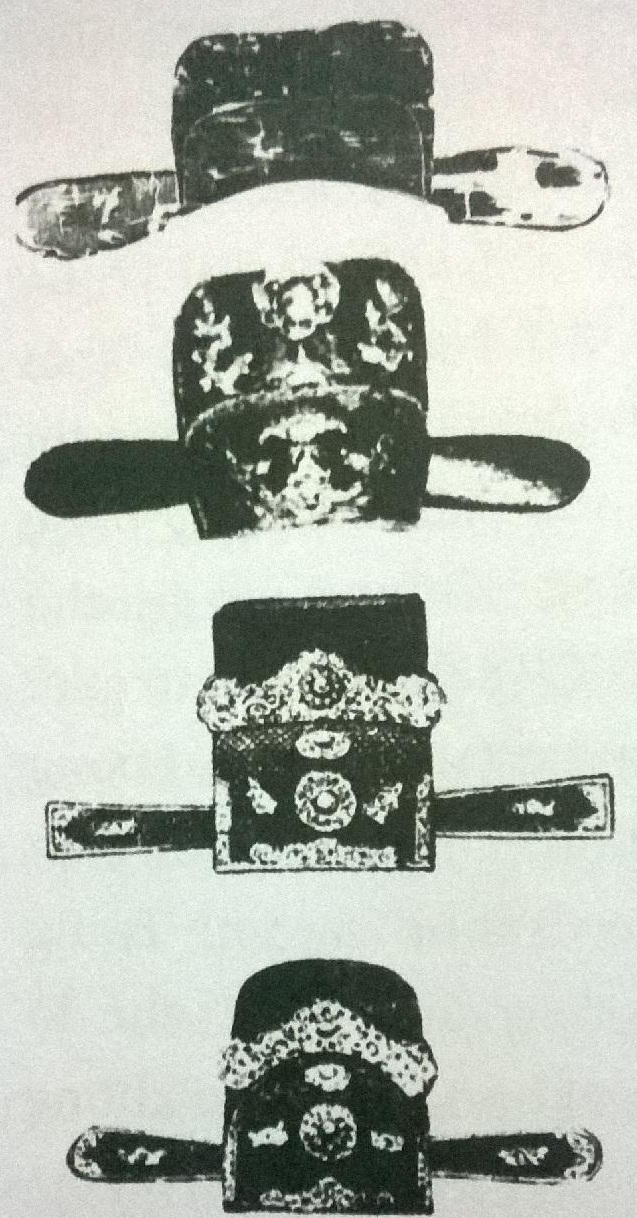
Ô Sa hat from the Early Lê Dynasty;
Eunuch Trinh Dang Dong’s Phốc Đầu hat
Phốc Đầu hat for Military and Civil officials
Along with the Phốc Đầu hat, mandarins wore robes whose colors directly indicated their rank. Purple was the most prestigious color, followed sequentially by red, green, blue-green, and blue. The daily court attire typically avoided elaborate embroidery; color itself was the essential basis for distinguishing rank.
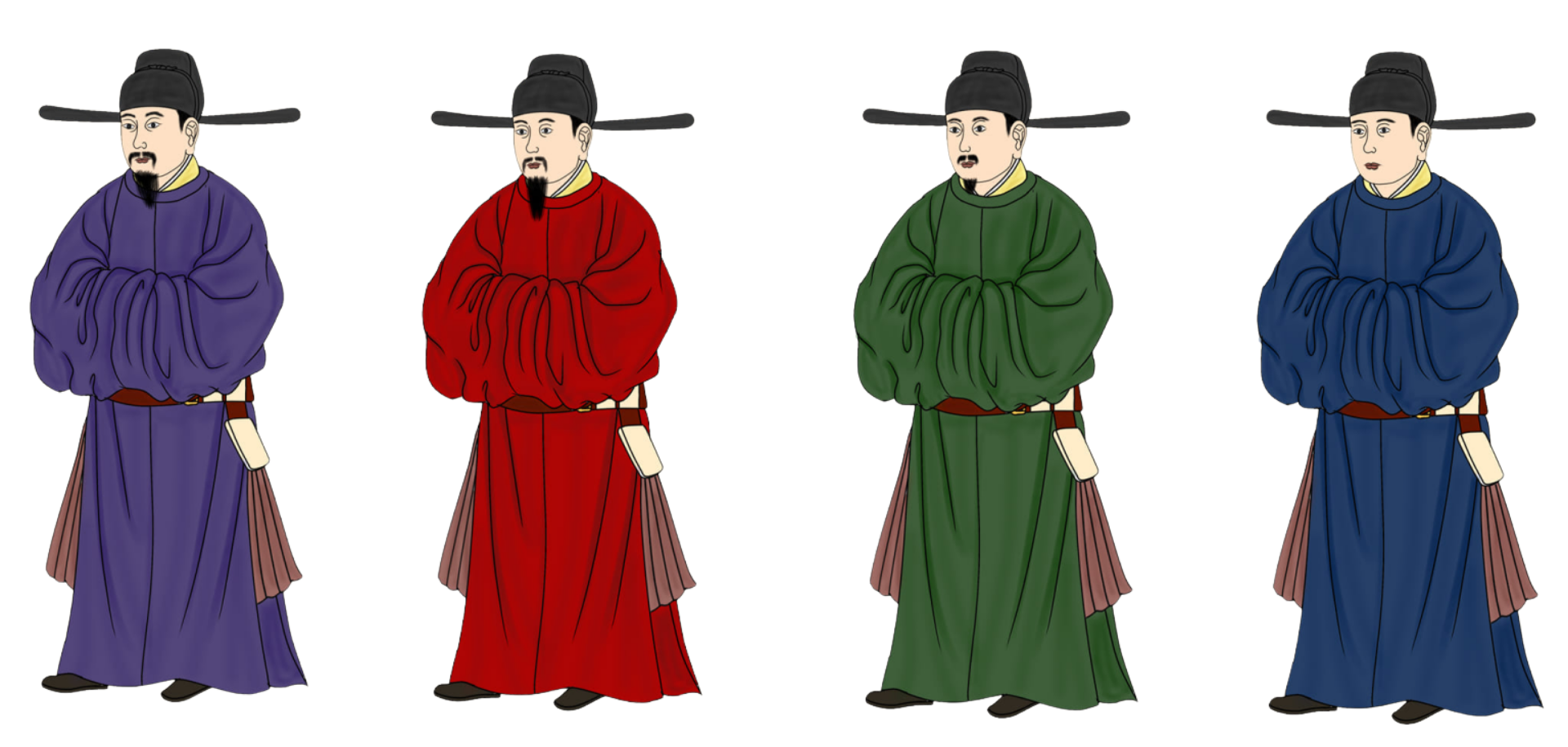
Attire of mandarins during the Dinh – Early Le Dynasties
Furthermore, meritorious, virtuous, or highly favored officials were sometimes bestowed a special adornment by the emperor: the Ngư Đại. This accessory, a fish-shaped ornament engraved with the official’s name, was attached to the belt and worn during routine court assembly to signify their elevated status publicly.

The Ngư đại from the Song Dynasty
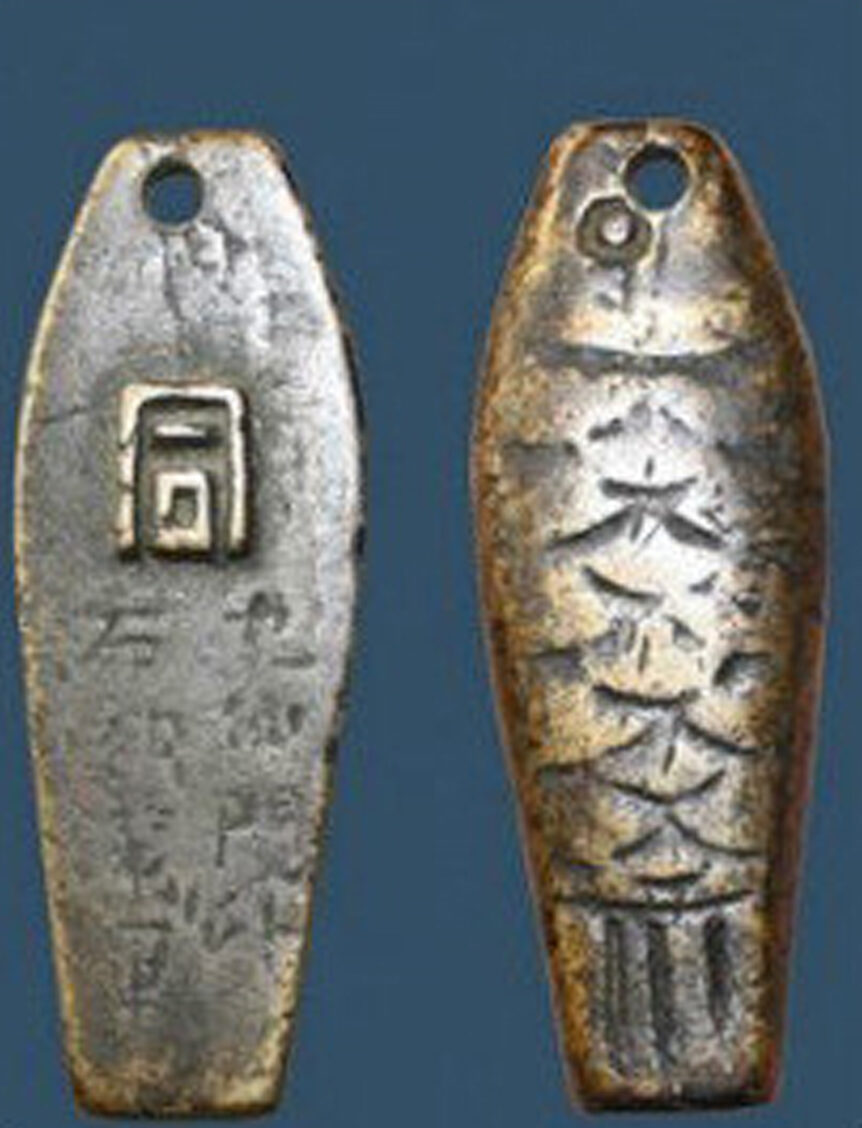
The Ngư đại from the Tang Dynasty
In summary, the attire of the Ly Dynasty mandarins constituted a sophisticated system that not only clearly reflected the court’s strict hierarchy but also demonstrated the skillful adoption and localization of cultural elements from neighboring empires.








